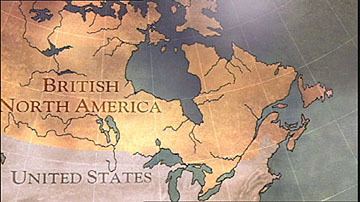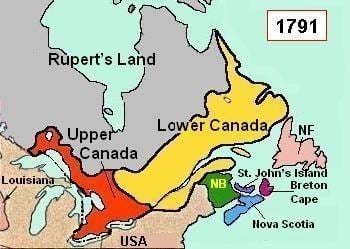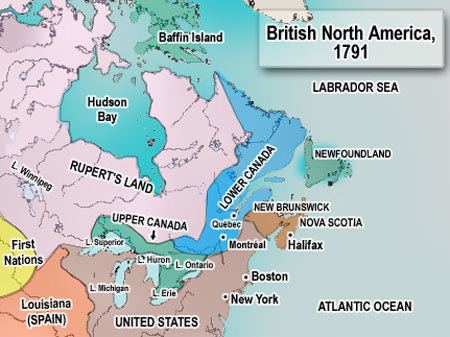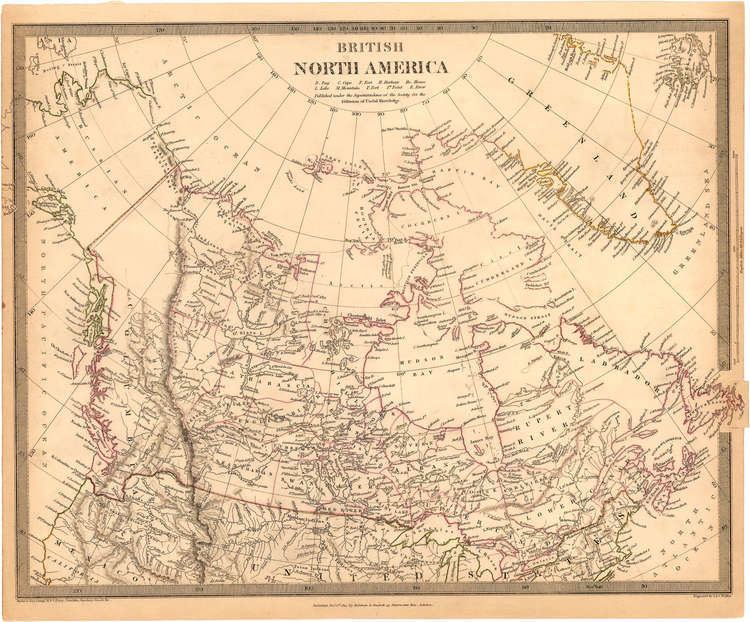Religion Anglicanism 1820–1830 George IV Date dissolved 1907 | 1783–1820 George III Founded 1783 | |
 | ||
Capital Administered from London, England Political structure Affiliated British territories Currencies | ||
Rsanimate british north america
British North America refers to the former territories of the British Empire in mainland North America. The term was first used informally in 1783, but it was uncommon before the Report on the Affairs of British North America (1839), called the Durham Report. These territories today form modern-day Canada and the Pacific Northwest of the United States. British colonization of North America (including colonization by both the English and the Scots), began in 1607 in Jamestown, Virginia and reached its peak when colonies had been established throughout the Americas.
Contents
- Rsanimate british north america
- British north america act creates the dominion of canada
- Political divisions
- British North America colonies
- Administration
- References

British north america act creates the dominion of canada
Political divisions

In 1775, on the eve of the American Revolution, the British Empire included 20 territories in the Western Hemisphere northeast of New Spain. These colonies were:

Britain had acquired Quebec from France and East and West Florida from Spain by the Treaty of Paris (1763), which ended the Seven Years' War.

Spain gained West Florida and regained East Florida, and the United States of America, upon acknowledgement of their sovereignty, acquired the part of Quebec south of the Great Lakes by the Treaty of Paris (1783).

Nova Scotia was split into modern-day Nova Scotia and New Brunswick in 1784. The part of Quebec retained after 1783 was split into the primarily French-speaking Lower Canada and the primarily English-speaking Upper Canada in 1791.

After the War of 1812, the Treaty of 1818 established the 49th parallel as the United States–British North America border from Rupert's Land west to the Rocky Mountains. Britain gave up Oregon south of the 49th parallel, which was part of the Hudson's Bay Company's Columbia District, under the Oregon Treaty of 1846.
The boundary of British North America with Maine was finally determined by Webster-Ashburton Treaty of 1842.
The Canadas were united into the Province of Canada in 1841.

On 1 July 1867, an act of the British Parliament called the British North America Act formed the Dominion of Canada from the Province of Canada, New Brunswick, and Nova Scotia. The former Province of Canada was split back into its pre-1841 parts, with Canada East (Lower Canada) renamed Quebec, and Canada West (Upper Canada) renamed Ontario. These were the original four provinces of Canada.
In 1870, Rupert's Land was annexed to Canada as the Northwest Territories (NWT), and a part of the NWT, Manitoba, became a province of Canada. The west-coast British colony north of the 49th parallel, British Columbia, joined Confederation in 1871, and Prince Edward Island joined in 1873. The boundary of British Columbia with Washington Territory was settled by arbitration in 1872, and with Alaska by arbitration in 1903. In 1905, large parts of the Northwest Territories became the provinces of Saskatchewan and Alberta.
In 1907 the sole remaining British North American colony, Newfoundland, was granted dominion status, although starting in 1934 it was administered by the non-representational Commission of Government, a body chaired by British officials. In 1949 the island of Newfoundland, and its associated mainland territory of Labrador, joined Canada as the tenth province.
Although semi-independent from 1867, and fully sovereign on foreign affairs with the Statute of Westminster 1931, the last vestiges of Canada's constitutional dependency upon Britain remained until Canadians agreed on an internal procedure for amending the Canadian Constitution. This agreement was implemented when the British Parliament passed the Constitution Act of 1982 at the request of Parliament of Canada.
British North America colonies
The colonies that existed before the signing of the 1846 Oregon Treaty:
Administration
Besides the local colonial governments in each colony, British North America was administered directly via London.
From 1783 to 1801 it was administered by the Home Office and by the Home Secretary, then from 1801 to 1854 under the War Office and Secretary of State for War and Colonies. When the Colonial Office was re-established it was under the responsibility of the Colonial Secretary.
